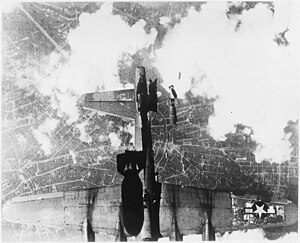
Back نيران صديقة Arabic Dost atəşi AZ Kakamping pag-atake BCL Приятелски огън Bulgarian Foc amic Catalan Palba do vlastních řad Czech Saethu cyfeillgar CY Egenbeskydning Danish Eigenbeschuss German Φίλια πυρά Greek

In military terminology, friendly fire or fratricide[a] is an attack by belligerent or neutral forces on friendly troops while attempting to attack enemy or hostile targets. Examples include misidentifying the target as hostile, cross-fire while engaging an enemy, long range ranging errors or inaccuracy. Accidental fire not intended to attack enemy or hostile targets, and deliberate firing on one's own troops for disciplinary reasons is not called friendly fire,[1] and neither is unintentional harm to civilian or neutral targets, which is sometimes referred to as collateral damage.[2] Training accidents and bloodless incidents also do not qualify as friendly fire in terms of casualty reporting.[3]
Use of the term friendly in a military context for allied personnel started during the First World War, often when shells fell short of the targeted enemy.[4] The term friendly fire was originally adopted by the United States military; S.L.A. Marshall used the term in Men Against Fire in 1947.[5] Many North Atlantic Treaty Organization (NATO) militaries refer to these incidents as blue on blue, which derives from military exercises where NATO forces were identified by blue pennants and units representing Warsaw Pact forces by red pennants. In classical forms of warfare where hand-to-hand combat dominated, death from a "friendly" was rare, but in industrialized warfare, deaths from friendly fire are more common.[6]
Friendly fire should not be confused with fragging, which is the uncondoned intentional (or attempted) killing of servicemen by fellow personnel serving on the same side.
Cite error: There are <ref group=lower-alpha> tags or {{efn}} templates on this page, but the references will not show without a {{reflist|group=lower-alpha}} template or {{notelist}} template (see the help page).
- ^ Regan, Geoffrey (2002) Backfire: a history of friendly fire from ancient warfare to the present day, Robson Books
- ^ Rasmussen, Robert E. "The Wrong Target – The Problem of Mistargeting Resulting in Fratricide and Civilian Casualties" (PDF). Archived (PDF) from the original on 31 October 2012. Retrieved 4 January 2011.
- ^ Joint Chiefs of Staff. "Department of Defense Dictionary of Military and Associated Terms, 20 November 2010 (As amended through 31 January 2011)" (PDF). p. 149. Archived (PDF) from the original on 6 October 2016. Retrieved 18 August 2016.
- ^ Oxford English Dictionary, 2nd ed. cites a 1925 reference to a term used in trenches during the war
- ^ Marshall, S.L.A. (1947). Men Against Fire. University of Oklahoma Press. p. 193.
- ^ Shrader 1982, vii